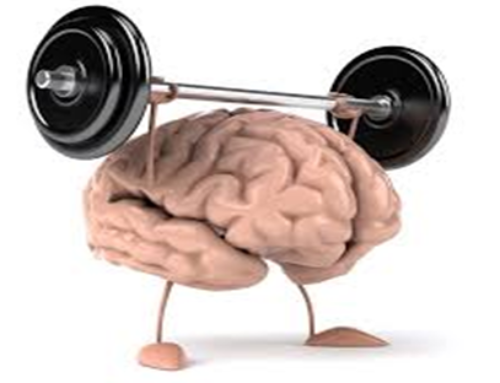 One of the biggest issues facing Australian business today is productivity. That is, a lagging output for a given input – and Australia is increasingly becoming an expensive place to do business. While technology has vastly increased to streamline and economise many processes, labour costs and employee benefits have sky-rocketed in recent times. Costs of goods, manufacturing and processes have all increased at a greater rate than our ability to improve productivity.
One of the biggest issues facing Australian business today is productivity. That is, a lagging output for a given input – and Australia is increasingly becoming an expensive place to do business. While technology has vastly increased to streamline and economise many processes, labour costs and employee benefits have sky-rocketed in recent times. Costs of goods, manufacturing and processes have all increased at a greater rate than our ability to improve productivity.
A country’s ability to improve its standard of living over time depends almost entirely on its ability to raise its output per worker. Paul Krugman, Economist.
So how does this impact the worker?
Personal life and work life are often considered two different worlds. ‘Work / Life’ balance is a pretty popular concept these days, since it’s easy for the demands of today to let us slip into spending disproportionate amounts of our life in work as opposed to balancing everything else. However, I dislike the term ‘work/life’’ and always have. It gives me this impression that my work life is separate to my personal life. But I only have one life, and must manage both parts of it (and other parts as well for that matter) as one integrated unit. Not letting one take from the other or vice versa. In fact, the ideal scenario is to have them feed off each other to prosper more than if only one facet existed by itself; much like the principal of ‘synergy,’ where the whole is greater than the sum of the parts.
A great example is the serious athlete who also works and also has a family. Maybe they even run their own business. They cannot simply pour all of their energy and focus into their training – they have a family and business to run. Likewise they cannot solely prioritise their business or both family and training will suffer. Regardless of there being many different facets or parts to this person’s life, it is still one life, and all aspects of performance, recovery, progress and consistency must be managed optimally to realise maximum potential. If optimised correctly this athletic, family-oriented worker could very well perform better at work due to the energy derived from their fitness, be a happier and less-stressed parent because of their effectiveness at work and play, and ultimately be a more pleasurable person to be around due to the balance and harmony in the major areas of their one life.
To not have this philosophy in mind and view the ‘work/life balance’ as two very separate facets that should be kept at bay would be analogous to having two wives, neither of which can know about the other and having to continually keep them completely separated. One wife we’ve met (and keep) at work, the other at home. We could even call it the ‘work/wife balance’. But how stressful and draining would that be? I know that might not be the intention of the term ‘work/life balance’ but I do think it’s important to clarify the notion that work and life are not balanced in a way where work is one thing and your life is everything outside of work. Your work is your life. Just as is your health and relationship and family and social life. The point is certainly not to suggest bringing work home with you every night or letting your personal calls take up most of your office time, but inevitably there will be times when the most effective strategy to excel and be fulfilled in your life will involve much crossover of each aspect of your life. Remembering, its one life! The focus of this article is highlighting how to maximise the productivity of business by maximising the performance and recovery of the worker – at home and work!
 Performance:
Performance:
In the business realm the biggest challenge of our modern day is keeping up with productivity and the fast-paced world of endless demands.
In the personal realm of life there are an endless amount of activities that people might spend their waking hours on, from chores to hobbies to family to education or social interactions. Yet, the biggest challenge retorted by most people even at home is still ‘not enough time’ – proposing that output for input (be it time or resources) is once again the struggle.
So how do we keep increasing productivity at work and home to exceed the growth of cost and demand?
One way or another we need to continually improve our personal effectiveness, be it through better time management, improved systems and automation, or decreasing resource costs (time and money mainly) as much as possible – however you want to look at it. If we were to measure personal effectiveness across all areas of one’s life let us call this ‘Performance’. Like the athlete measures training and competition performance (how well they stack up compared to themselves and others), or the KPI’s of a workplace aim to measure the performance of the worker, let’s assume ones performance in the contexts of family/social/chores, or whatever else they consider important to ‘getting ahead’ relative to their own goals, is just as measurable. This is the performance of that one person. For this person to stay on top of their game we are not just interested in a performance criteria being exceptional in one area to the detriment of another, because as we mentioned earlier, the person is and functions as one whole.
So while they might kick arse at one thing now, if they don’t look after themselves as a whole it’s only a matter of time before that scotoma in the other areas starts taking its toll. No matter how you look at it, any stressor placed on the body (immune, physical, emotional, cognitive) will result in a stress response that, depending on the tolerance of that person and their current state of resilience, will inevitably cause (at least) a minor post-incident dip in energy reserves. Just as the athlete is not stronger after a workout – they are weaker, momentarily, until they have fully recovered from that ordeal and the body has adapted to a new super-compensated level of resilience. Before this recovery, however, the body is weaker, energy reserves are lower and short-term immuno-suppression leaves the body more vulnerable to disease. Now, what if this is on-going? The constant push to continually produce slowly fatigues the person’s ability to sustain production at that level. This consequential decrease in productivity causes the person to ‘fire-on’ all cylinders and push even harder in attempt to maintain the original productivity. This gradual decrease in productivity per work-hour leads to longer hours to make up the shortfall. This in turn leads to further burnout and perpetually spiralling into exponentially exerted effort of diminishing returns.
Recovery:
The athlete must rest to gain the benefit from their physical stressors, and so too must the balanced individual recover from their physical, mental and emotional stressors before they become stronger from it instead of weaker. Only then can they continue to tackle greater tasks and perform more.
So what does ‘recovery’ entail?
There are innumerable angles to approach recovery, but below are the top four to focus on for optimal recovery.
1. Sleep – optimising the mind and body’s natural recovery. Includes parasympathetic predominance and general rest.
2. Food and Energy – Fuel for optimal performance and nourishment as well as physical activity sufficient to improve and optimise energy and endurance.
3. Stress – resilience and state management strategies.
4. Personal Discipline – time management, strengthening the body and mind, clarifying goals and targets with more disciplined focus.
So how can we improve our productivity while maximising our performance and recovery to create a synergistic lifestyle that keep on keeping on? Well it’s not an easy process but by mapping out the areas that need your attention and their urgency you’re on the right track.
To do this, start by:
1. Defining clear outcomes of achievement, be specific and identify goals relative to each area.
2. Possess or acquire relative skill-sets and have access to the resources required to achieve your goals.
3. Organise or manage time blocks of “like’ activities relative to the energy demands and states required.
4. Maintain productivity ‘flow’ in an as disciplined way as possible.
Over the next month map out these areas, identify what you need to achieve them and organise your time accordingly. You should quickly see if the balance is out; if recovery is time is lacking or maybe personal discipline is what’s holding you back. It’s possible to manage every area but not if you don’t make the time.
Next month we’ll take a closer look at each area of performance and see if your productivity is improving and if you’re working with the important areas of your life in harmony or if you’re imbalances is a ticking time bomb. Stay tuned!
[button variation=”blue” link=”https://conanfitness.com/wp-content/uploads/2013/07/Productivity-Performance-and-Recovery.pdf” size=”small” rating=”norating”] Download Article [/button]





